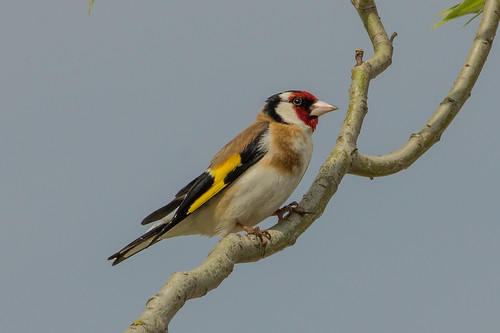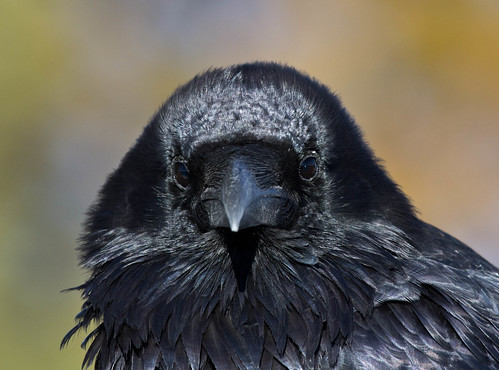 |
| Sam Cook's photograph in the Duluth News-Tribume |
Yesterday, my friend Sam Cook wrote a wonderful column in the Duluth-News Tribune about his encounter with a pair of ravens. Sam and his wife Phyllis were traveling through the Canadian Rockies when they took a break at a rest stop, and two ravens approached very close. Those of us living up here know how much distance ravens like to keep from us, so I’m always surprised when I go out West and see how savvy ravens understand the value of approaching humans in specific situations, often involving dumpsters. Sam wrote:
The two birds foraged independently for some time before returning to perch on the edge of the dumpster. They sat so close together their bodies must have been touching. They seemed to be taking a break.
That’s when the cool stuff started to happen. One of the birds would tilt its head forward and down, until its beak was almost touching its feet. And the other, perhaps sensing a request, began pecking among its partner’s head feathers. It appeared to be plucking tiny bits of something from among the feathers. Tiny insects? Dirt? Potato chip bits? It was impossible to know.Sam quoted me and Sparky Stensaas—we’d both “attributed the interaction between the ravens to pair-bonding activity — little acts that cement a relationship between two birds.”
Meanwhile, in a lovely bit of serendipity, yesterday the University of Chicago posted a story about a new study in the Proceedings of the National Academy of Sciences by biologists at the University of Chicago and the University of North Carolina, explaining how male investment in sexual cooperation and bonding evolves.
The article didn’t involve mutual preening between attached birds, but cited the curious case of Zebra Finch plumage. During the 1980s, a scientist named Nancy Burley showed that placing red color bands on a male zebra finch’s legs results in his mate working harder for the brood, and consequently raising more of their young. This isn’t at all related to romantic ravens, or is it? The University of Chicago article yesterday said:
Zebra finches have red beaks already; Perhaps the more of the color red on display, the greater the excitement because it elevates the female’s hormone levels. But while the appearance of the flashy display that stimulates females may be good for the male (he has more offspring), it is likely bad for the female to invest more (she has to work harder, affecting her chances of successfully raising more offspring in the future).
Using a mathematical population genetic model, [University of Chicago biologist Trevor Price, Ph.D.], Maria Servedio, Ph.D., from the University of North Carolina, and their colleagues show how these scenarios could play out to the species’ advantage by weighing the costs of their investment with the number of hatchlings they can raise over many generations.
For example, say the females of a species usually lay three eggs and their partner helps them to raise the young, but a male with increased blue coloration causes his mate to lay four eggs. The blue males have more offspring than duller males, so blue males become increasingly common over generations.
However, raising the extra young comes at a great cost to the females, so a female who lays only three eggs has an advantage over one laying four, and these females become increasingly common. At the end of this process, all males are blue and all females lay three eggs. But now, if the male does not create a display, females would only lay two eggs, which is not good for either one of them.
Price, the senior author, was quoted talking about trapping a female European Goldfinch to band her, and while she was trapped and he was carrying her to the banding station, her mate followed, calling. “He waited impatiently in a nearby tree as I banded the female, and when I released her the pair flew off together in close company, twittering. This kind of thing happens in many other species, too, so forming a strong pair bond and emotional attachments between a male and female is evidently not only a feature of humans.”
Sam Cook virtually always ends his columns with a cool last line, and this piece was no exception. He wrote about his ravens:
When the grooming and pecking and plucking was apparently finished, the pluckee turned to face its partner. In a fleeting movement, the two birds opened their mouths and appeared to briefly clasp each other’s beaks. The moment was over almost before it began.
You can make of it what you want. Perhaps that, too, is common behavior between raven partners.
“Thanks for the preening, hon.”
“Anytime, babe.”
I’m no ornithologist, but I think I recognize a good relationship when I see one. I just didn’t think I’d see it atop a dumpster along the Icefields Parkway.Sam may not be an ornithologist, but he’s way ahead of ornithologists who enter a discussion of evolution with a bias about male promiscuity being the way males reproduce their genes. You don’t have to look far in nature to know that’s not true for every species. Thinking that aggression or male promiscuity are essential strategies for "survival of the fittest" are ideas that belong in a dumpster.

